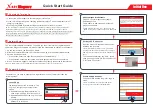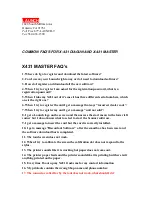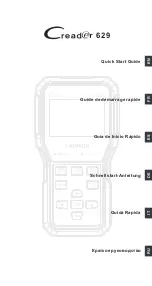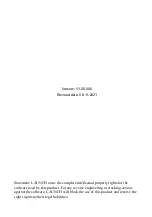
Operation 89/132
RE 30201-B/07.2014, SYEPS series 1X,
Bosch Rexroth AG
POP
PSP 1
PSP 2
PUP
0 mm
x
t
IN 2
OUT 2
Position POP reached
Start stroke
R421
R449
R446
R420
R423
R447
R448
R425
Fig. 64: Soft punch with associated I/O signals
Positions and velocities can be set as described for the operating mode “punching”.
This operating mode works like operating mode 37 “soft punch” with the only
difference that the positions PSP1 and PSP2 are established automatically by the
pressure sensor installed in MA. This helps reduce noise and overshoots. The
amount of reduction can be set with R parameter R449 “valve stroke limit”. Since an
excessive reduction may result in slower punching strokes, the optimum setting must
be established within the framework of initial commissioning of a machine series.
This function is provided in the standard variant only. When changing over to
operating mode 52, zero point correction is started automatically and OUT7 “status
of zero point error correction” is set to “Low” to signal that the correction is running.
By setting output OUT7 the HNC100 signals that zero point correction is completed.
See Chapter 9.1 “Switch-on sequence” on page 81 - operating mode 52 must
be executed directly after switching on, before another operating mode can be
called up.
This function serves for referencing an incremental encoder in the upper positive
stop.
The reference run is started by a changeover to operating mode 53. The axis moves
to the upper positive stop at the velocity set in R parameter 499 “controller output
value“.
R499 must be < -0.500 V.
As the positive stop is recognized, the value entered in R parameter 427 “reference
position“ is taken as actual position value.
After the successful takeover, output OUT 1 is set, thus signaling that referencing is
completed.
9.2.8 Forming operating modes
The forming operating mode is also referred to as stamping or embossing and is
used for forming metal sheets with special tools. In conjunction with this forming
mode it is important that the tool penetrates the metal sheet softly and dwells for a
defined time. The material requires this dwell time for flowing. This helps to achieve
optimum forming or embossing results.
Adaptive soft punch - 43
Automatic zero point
calibration - 52
Reference run - 53
Forming - 35
















































